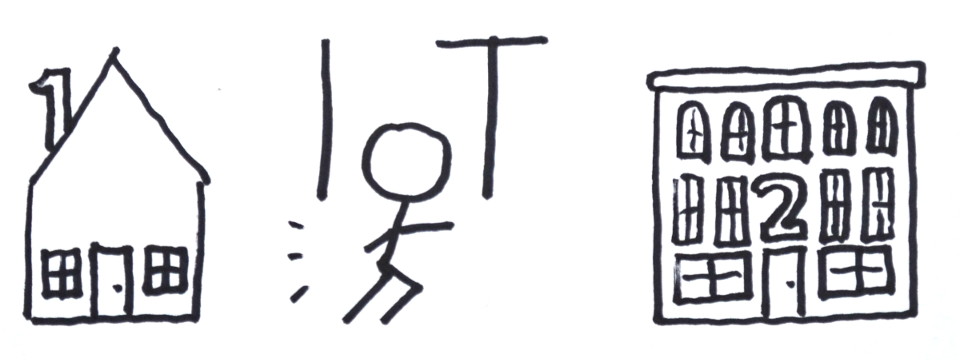Last week, in her Stacey on IoT newsletter, the one and only tech journalist who has shared our passion and optimism for the IoT since the earliest days of the hype wave of 2012 finally changed her tune, declaring that “the state of the smart home in 2018 is pretty disappointing.”
We’re going to have to continue waiting for a home that truly reacts in an intuitive way to our needs and expectations. Before we get there, we’ll need [1] standards around presence detection, [2] a way to recognize people in the home, and [3] stored information about their preferences. And in a smart home, those preferences will be based on a computer analysis of habits, [*] not someone sitting down for an hour to program a specific set of actions.
We first met Stacey Higginbotham at SXSW in 2013 when she was writing countless articles on IoT startups for GigaOM. A few months previous to that meeting, we had already dismissed the smart home as a likely spearhead of IoT advancement, based on a decade of our own experiences. And while Stacey’s latest post is in keeping with this view, hope for the greater IoT is nonetheless far from lost when we examine — outside the context of the smart home — the three concerns she raises.
1. Standards around presence detection
The reelyActive co-founders’ experience in real-time location systems (RTLS) dates back to 2004 and we can attest that the benchmark in location has always been to “put the dot on the map”. Recognising that precision location only matters for a small subset of applications, we founded reelyActive instead on the premise of location to the nearest point of interest or zone. And, in 2014, while literally exploring the notion of Google Analytics for the Physical World we stumbled upon a standard for representing points of interest and zones: the URL.
Said differently, by modelling physical spaces as webpages, with each zone having its own unique URL, it becomes possible to represent physical presence like a click on a webpage. Today our technology is based on this paradigm. Where commercial interests have failed to produce a standard for presence detection, the Internet provides a viable option for anyone prepared to think web-first. In short, there is a standard around presence detection: just click your heels and say “there’s no place like the smart home!”
2. A way to recognise people
In September of 2013, Stacey wrote Loophole in iBeacon could let iPhones guard your likes instead of bombard you with coupons, in which reelyActive demonstrated iOS devices “advertising” the presence of their users. Indeed, for almost five years, there has been a way to recognise people via their mobile devices using Bluetooth Low Energy (BLE). And last year, we took the concept even further with reelyApp making it easy to “Advertise” yourself with the Physical Web, and beyond….
However, the fact that five years on, neither iOS nor Android is keen to endorse this feature confirms the fact that we were indeed exploiting a “loophole”. But, in building barriers rather than promoting permissionless innovation, the smartphone titans have opened the door to a viable alternative… In short, there is a standardised, accessible way to recognise people.
3. Stored information about people’s preferences
Until recently, there were two options: Personal Data Lockers and Facebook. And while we detailed exactly how Facebook could share their users preferences in the real-world in real-time, the company’s recent Cambridge Analytica scandal doesn’t bode well for this happening anytime soon.
Fortunately, the Internet again provides a standard for representing oneself and one’s preferences: JSON-LD and Schema.org. The pair have been championed by Google since about 2015, and we ourselves host our own open data locker (based on our open source json-silo) and represent common connected devices in this format through our Sniffypedia project. In short, there is a standardised way to store (and retrieve) information about people and their preferences.
* Without the need for human entered data
We can’t stop referencing Kevin Ashton’s definition of the IoT as the ability for “computers to observe, identify and understand the world—without the limitations of human-entered data“. As Stacey says, “someone sitting down for an hour to program a specific set of actions” is, by definition, the antithesis to the IoT. The smart home is therefore, as predicted, an unlikely spearhead of a pervasive IoT.
But while the home remains our primary social environment (the ‘first’ place), let’s not forget the workplace (the ‘second’ place) as well as the diverse candidates serving as the ‘third’ place. Among the leading applications of our IoT platform is the workplace (think offices, healthcare facilities and even retail stores) where workers have plenty of compelling reasons to be detected, recognised and treated in according to their preferences (video). In each instance, the aforementioned standards for proximity, identification and representation are being successfully applied, and the definition of the IoT begins to ring true.
The IoT is finally running away from home to a place where it actually works today. That’s a good thing. In time, it’ll make its way back home, but probably not before stopping by a few ‘third’ places along the way.
